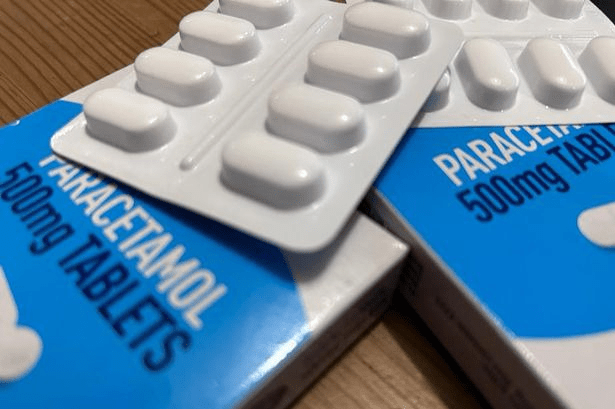Highlights of tendonitis in fingers
- Tendonitis is the wear and tear of the tissues that connect the muscles to the bones.
- The most common areas of occurrence include the base of the thumb, Achilles tendon, finger joints, and elbows.
- Tendonitis in the fingers is characterized by pain and swelling, sometimes with the inability to move the fingers.
- It is not a grave condition, but it interferes with your daily routine.
- Treatment of tendinitis involves self-care and very rarely the use of medications or the need for surgery.
Possible Causes of Tendonitis -
Since we use our fingers and hands for almost every single activity, we have to perform; tendonitis can occur to almost anyone due to an accident or an injury when we move our fingers around. Tendonitis in hands can also be caused due to frequent and repetitive movements of the fingers, such as continuous typing on a keyboard, painting, or even playing at the table. The most common causes of tendonitis are:-
Injury to the finger -
- Age: With age and compromised immunity, the fingers' flexibility reduces, so any slight twist of the finger causes an injury to the tendons.
- Accident: A sudden hit on a hard object can send a wave of pressure on the tendons and cause inflammation.
-
Physical activity

-
- Sports: Sports that require the use of hands, such as handball, basketball, table tennis, etc., is a common cause of sports-induced tendonitis in fingers.
- Instruments: Playing the piano for long hours without breaks in between adds trauma to the fingers. Similarly, practicing the drums using drumsticks can bring serious pain to the fingers of the instrument player.
- Gym: Overworking at the gym and overtraining with heavy weight may cause a tear in the tendons of your fingers.
-
Occupational hazards
- Accountants, typewriters and coders, and anyone involved in continuously using the keyboard or mouse may be affected by tendonitis.
- Painters, sculptors, and potters are also at risk of developing acute tendonitis.
Symptoms of Tendonitis of finger -
Symptoms of Tendonitis of finger vary from person to person as well as depending on the activities you perform daily that may give rise to certain symptoms. Reasons to believe that you may be suffering from tendonitis in hands are:- Inflammation and swelling of the finger
- Intense pain
- Pain while bending the fingers
- Pain in the elbows while bending the fingers
- Stiffness
- Numbness
- Bruising - red or purple coloration
- Pain that radiates to other fingers
- heat in the affected finger
- cracking when bending the finger
Who is prone to tendonitis in fingers?
Tendonitis in the fingers mainly occurs due to one of the following two reasons:- sudden accident or injury to the fingers
- repetitive motion or swinging of the fingers
- Painters
- clay model artists
- Golfers
- basketball players
- Gardeners
- graduate students
- typewriters
Available Treatment options for Tendonitis of finger -
Treatment for tendonitis in fingers is mainly to relieve swelling and inflammation. It can either be done using home remedies or by taking pain medications. In cases of chronic tendonitis, stronger anti-inflammatory surgery injections may be advised to correct the defect in the finger. Treatment options for tendonitis in fingers are as follows:-
Medication

- OTC painkillers- such as Paracetamol and Ibuprofen to reduce internal pain.
- Antibiotics- often, inflammation in the tendons is caused due to an infection. Thus, treating the infection with the use of antibiotics can reduce inflammation.
- Steroid tablets- corticosteroids such as Hydrocortisone may be prescribed to treat chronic pain in the fingers.
- Steroid injections- when tablets do not seem to work, injections may relieve pain.
-
Home care -
- Compress therapy- use an ice pack or a heating pad to gently massage the affected fingers to reduce the swelling. Do this 3-4 times daily or until you see improvement.
- Using a splint- a splint is a cast for the fingers. It helps lock the finger in place and limits the movement of the fingers.
- Rest- is of utmost importance to ensure that the tendon has time to heal.
- Physical therapy- some mild stretching and simple movement exercises are recommended to improve the flexibility of the fingers. It is to be done once the swelling subsides.
-
Surgery
- Open surgery- The palm is cut open to allow the tendon more movement area. It reduces pain when bending the fingers.
- Percutaneous Release- in this, the bottom of the finger is cut open to make more space for the tendon to move.
- Tenosynovectomy - The procedure is the last option to treat tendonitis and is rarely suggested unless required in extreme conditions. It involves surgically removing a part of the tendon to make more space for the tendon to move around.
Conclusion -
If you suffer from tendonitis in your fingers, be assured you are not alone. It frequently occurs in working adults and young adults involved in playing sports. A good way to prevent this condition is to exercise your fingers and get a hand massage every once in a while. If your job demands the continuous use of your fingers, be sure to rest your fingers for 5 minutes every hour. The pain and inflammation in the fingers often flare up and cause tremendous soreness and inability to move the fingers. In such cases, seek immediate medical help to avoid further damage to the nerves surrounding the tendons.Frequently Asked Questions
What is the best way to treat tendonitis in the fingers?
Tendonitis is a mild condition that home care remedies can easily and safely treat. The first and most common treatment method is using ice packs to reduce the pain and swelling in the fingers. Use an ice pack on the affected finger 4-5 times daily to help numb the affected area and relieve pain. Depending on the severity of the affected finger, see a doctor if the pain or inflammation worsens.
How long does pain due to tendonitis last?
Pain in the fingers due to tendonitis arises due to the inflammation of the tendon. This pain can last up to 2 weeks with appropriate rest and self-care. However, in severe cases, when pain persists for longer than a few days, a severe injury or tear of the tendon may require surgical intervention.
How can I treat tendonitis in my fingers at home?
Tendonitis can be treated at home by performing simple physical movements of the finger to improve the flexibility of the fingers. Use a splint or a cast to cover the affected finger, limiting the finger's movement and offering complete rest to the finger to further promote its healing.

Reviewed by







